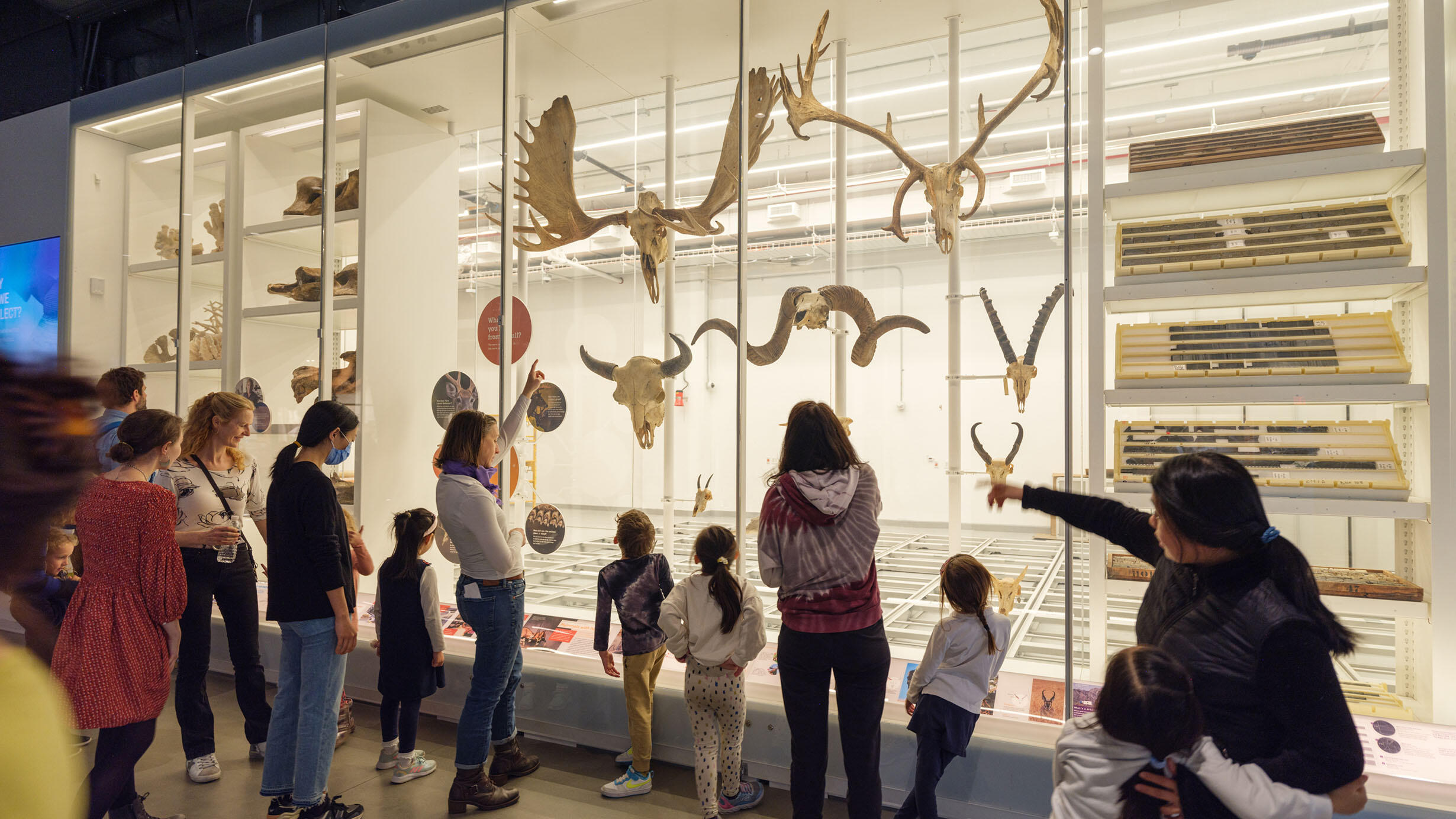 An array of ruminant mammal headgear is on view in the Museum’s Richard Gilder Center for Science, Education, and Innovation, part of the Macaulay Family Foundation Collections Gallery in the Louis V. Gerstner, Jr. Collections Core.
An array of ruminant mammal headgear is on view in the Museum’s Richard Gilder Center for Science, Education, and Innovation, part of the Macaulay Family Foundation Collections Gallery in the Louis V. Gerstner, Jr. Collections Core.Alvaro Keding/ ©AMNH
The many forms of mammal headgear, from the velvet-covered growing antlers of a deer to the tightly curled keratin-sheathed horns of a ram, are strikingly diverse, with a long history of puzzling scientists as to their evolutionary origins.
New genomic research out this week on ruminant hooved mammals—the group of herbivores known for ruminating, or “chewing cud,” like cattle, goats, and deer—provides further evidence that key aspects of these bony adaptations likely evolved from a common ancestor.
“This genomic research not only gets us closer to solving an evolutionary mystery, but also helps us better understand how bone forms in all mammals,” said the Zachary Calamari, an assistant professor at Baruch College and the CUNY Graduate Center and a research associate at the Museum. Calamari is the lead author of the new study, which is published in the journal Communications Biology.
Matt Shanley/ ©AMNH
Extreme examples of mammal headgear pepper the fossil record, including Megaloceros, the “Irish Elk,” whose enormous antlers could reach a 13-foot spread, and Ilingoceros, which had straight, spiral headgear that ended in forked tips.
Today, there are more than 170 modern species of ruminant hooved mammals, called artiodactyls, that display headgear of four types: antlers, horns, ossicones, and pronghorns. The way the animals use these appendages varies, including for defense, recognition of other members of the species, and mating.
Calamari began investigating the evolutionary origins of ruminant headgear as a comparative biology Ph.D. student in the Museum’s Richard Gilder Graduate School. Working with the Museum’s Frick Curator of Fossil Mammals John Flynn, Calamari used computer-based 3D shape analysis and genomic sequencing for the study, which focused on transcriptomes—genes expressed in a tissue at a specific time—and confirmed for the first time that family-specific differences in headgear likely evolved from a common ancestor as paired bony outgrowths from the animals’ “forehead.”
“Our results provide more evidence that horns form from the cranial neural crest, an embryonic cell layer that forms the face, rather than from the cells that form the bones on the sides and back of the head,” Flynn said. “It is striking that these are the same cells that form antlers.”
Calamari added, “These results help us understand the evolutionary history of horns and antlers and could suggest that differences in other ruminant cranial appendages, like the skin covering of ossicones or the yearly shed-and-regrown keratin sheath of pronghorns, are also elaborations on a shared ancestral cranial appendage.”